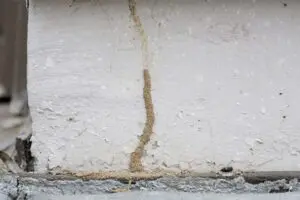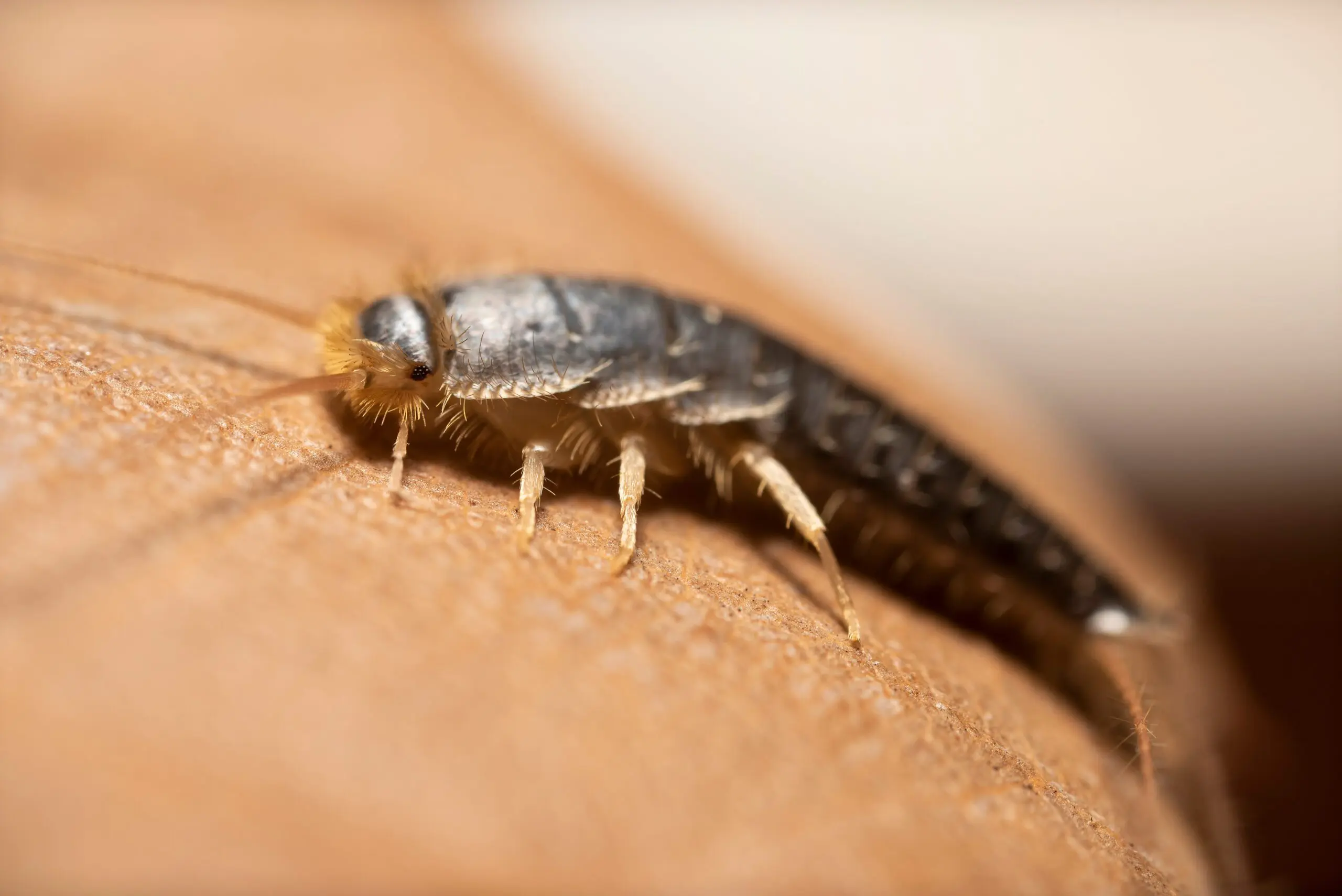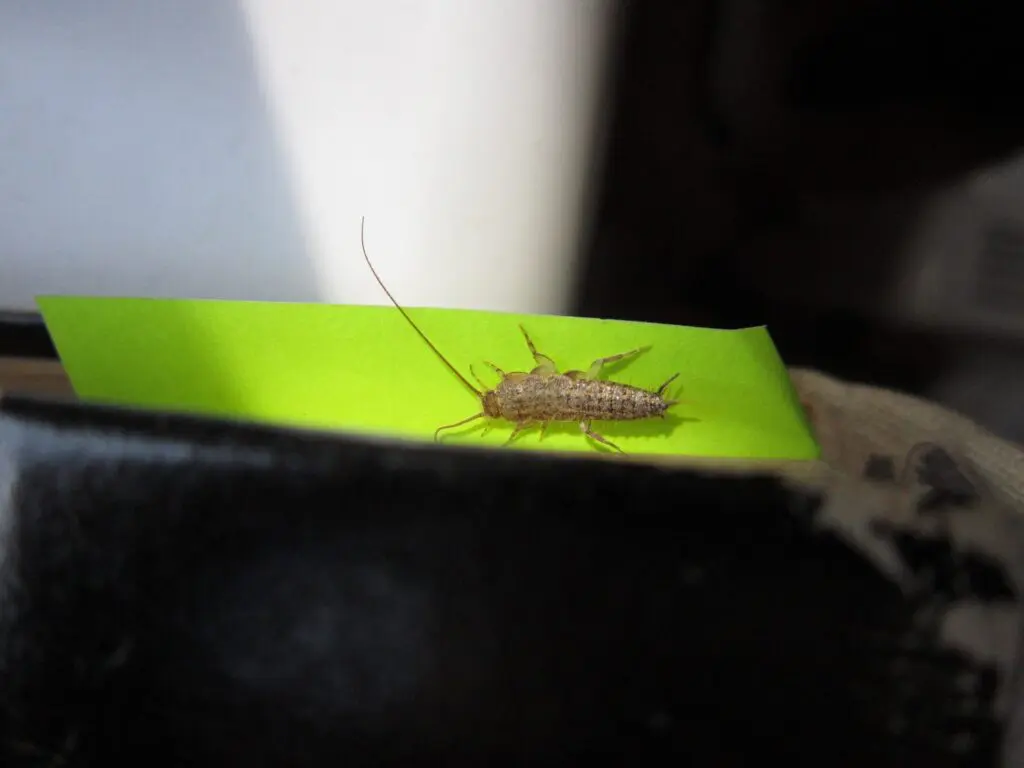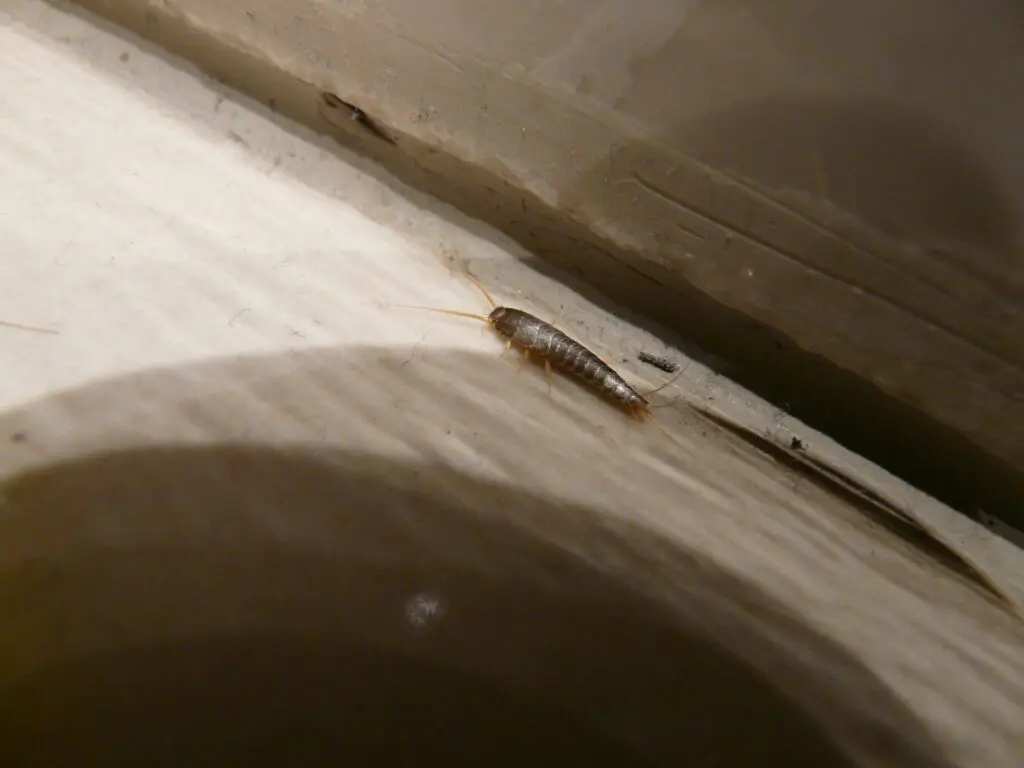

Silverfish may only be a nuisance pest, but that doesn’t mean they belong in our homes- they can still damage countless precious items and keepsakes, and they have been known to cause minor health problems. This guide will teach you how to identify silverfish and, more importantly, how to prevent them in the future.
Identification and Life Cycle
Silverfish are small, tear-shaped insects that only grow to around ½-¾ inch. Their broad heads taper down to a point at their rear ends. Their flattened bodies are brown, but they are covered with metallic scales, making them look shiny and silvery. They have two antennae on their front ends that are the same length as their bodies, and three bristle-like protrusions on their hind ends. Silverfish have no wings, so they cannot fly. Instead they wriggle around with a fish-like motion, and very quickly at that.
A silverfish can live for up to eight years. Like most insects, silverfish live their lives in three stages- egg, nymph, and adult. Eggs are deposited in cracks and crevices. These eggs, which cannot usually be seen by the human eye, will hatch in about 3 to 4 weeks. Nymphs look like mini versions of adult silverfish, although when they first hatch they do not have scales and appear whitish. They molt several times over the course of a year before reaching adulthood. Their scales and silvery color appear on the third or fourth molt. Once they have reached maturity, silverfish can begin reproducing. After their somewhat intricate mating ritual, a female will lay eggs two to three times a day in groups ranging from 1 to 20 eggs, depending on the species. One female will typically lay no more than 100 eggs in her lifetime.
Fun Fact:
Silverfish have been around since 100 million years before dinosaurs even existed! This makes them one of the most ancient insects on Planet Earth. Talk about old!
Habitat and Diet
Most pests pick their home based primarily on its proximity to food. While a food source is important to silverfish, it is not their priority. They are very sensitive to humidity and need a certain amount of moisture to survive. Ideally, they will live in areas with 75-90% humidity and 70-80 degree F temperatures. In the home, they can be found in bathrooms, kitchens, laundry rooms, basements, attics, storage areas, wall voids, and crawl spaces. Specifically, they like the dampest parts of these rooms like showers, sinks, cabinets, and leaky pipes or the areas surrounding them. Silverfish are shy creatures and do not like contact with humans, so they are mostly active at night. When indoors, they are active year-round.
Silverfish are incredibly adaptive when it comes to finding a food source. They can survive without food for a very long time, even up to a year. When they do eat, it is not hard for them to find food as they will eat just about anything that provides carbohydrates, starches, or protein. In general areas of the home, they feast on materials like carpet, wallpaper, insulation, glue, and dead or injured insects, including other silverfish. In kitchens and food storage areas, they will eat foods such as cereal, flour, sugar, rolled oats, dried meat, pet food pellets, and other similar goods. In bathrooms and laundry rooms, they like to munch on shampoos, shaving foams, and other personal products. Storage areas like attics and basements may provide silverfish with the most food of all- cardboard boxes, documents, books, pictures, stored clothing or fabrics, even dust!

Damage and Risks
Overall, silverfish are really just a nuisance pest. They don’t sting, they don’t bite, they don’t carry any diseases, and the damage they cause is minimal. That being said, they are still pests and they are not good to have around. A silverfish infestation is not necessarily caused by a dirty home, although their presence can definitely make a home dirtier. Everywhere they go, silverfish leave behind black fecal pellets, exoskeletons, and yellow dust and stains. Needless to say, any food products that have been contaminated by silverfish should not be consumed. In addition to contaminating food, the debris they leave behind are allergens and can cause reactions in some people and pets. As with any allergy, the reactions to silverfish debris range from mild to more serious. In most cases, the reactions are limited to coughing, sneezing, itchy throat, and mucus buildup. Silverfish can add to the effects of dust mites, and many people who are allergic to dust are also allergic to silverfish debris. Those with asthma may also be affected by silverfish. Silverfish are harmless to pets who consume one or two. However, pets that eat too many can get sick. Symptoms usually start with loss of appetite and stomach ache, but they may progress to vomiting and accompanying symptoms.
Beyond their health risks, silverfish can damage items in the home, especially those in storage. Wallpaper and carpeting are certainly in danger of being eaten, but given the choice, silverfish will choose food sources in areas with less traffic, like storage spaces. They are liable to ruin any stored paper or fabric products, and they do not differentiate between what’s important to you and what isn’t.
Signs of an Infestation
An Actual Silverfish. Since they are really only active at night, silverfish can be hard to spot. Seeing one is a good indication of an infestation because they generally will not risk being around humans unless there is not enough food or room- i.e. there are too many other silverfish to compete with.
Debris. As mentioned before, silverfish leave behind droppings, exoskeletons, and yellow stains and dust. Their droppings look like tiny black peppercorns and their exoskeletons are very delicate and transparent silverfish shells. The yellow stains and dust are left behind when they molt. Silverfish debris is often mistaken for regular dust, so if you suspect an infestation, check silverfish-frequented areas very carefully for these signs. If you find these signs and they keep reappearing after you clean them up, that is a sure indicator of silverfish activity.
Damage. Be on the lookout for any damaged items around the home. Check for feeding marks- they can appear as notches along a surface’s edge, etchings on a surface, or holes. Items may also have yellow stains.

Prevention
Here are some tips from the pros to get rid of Silverfish:
- Humid areas attract Silverfish, therefore you should try to minimize the amount of humidity in your home. Dehumidifiers and air conditioners work well for this purpose. Be sure your gutters are clean and working properly, and fix any leaky or clogged pipes and drains.
- Keep all silverfish food sources in pest-proof containers. Store pantry products like flour, sugar, and cereal in airtight, sealed containers. If possible, keep all stored paper and fabric products in plastic boxes (ideally, ones with a good seal) rather than cardboard ones.
- Eliminate all possible entry points by sealing all cracks and gaps. This includes those in the foundation, outer walls, and roof, as well as those around windows, exterior doors, utility entrances, and vents.
- Create a barrier of pebbles or stone around the perimeter or your home, particularly in areas where mulch meets exterior walls.
- Inspect all packages carefully for silverfish before bringing them inside, especially if they are packaged in cardboard.
Silverfish can be hard to notice right away, so they can become a problem very quickly. If you are beginning to see signs of silverfish activity, that might mean an infestation is near, if not already present. Give Excel a call and we’ll send over one of our experts for silverfish control right away.






